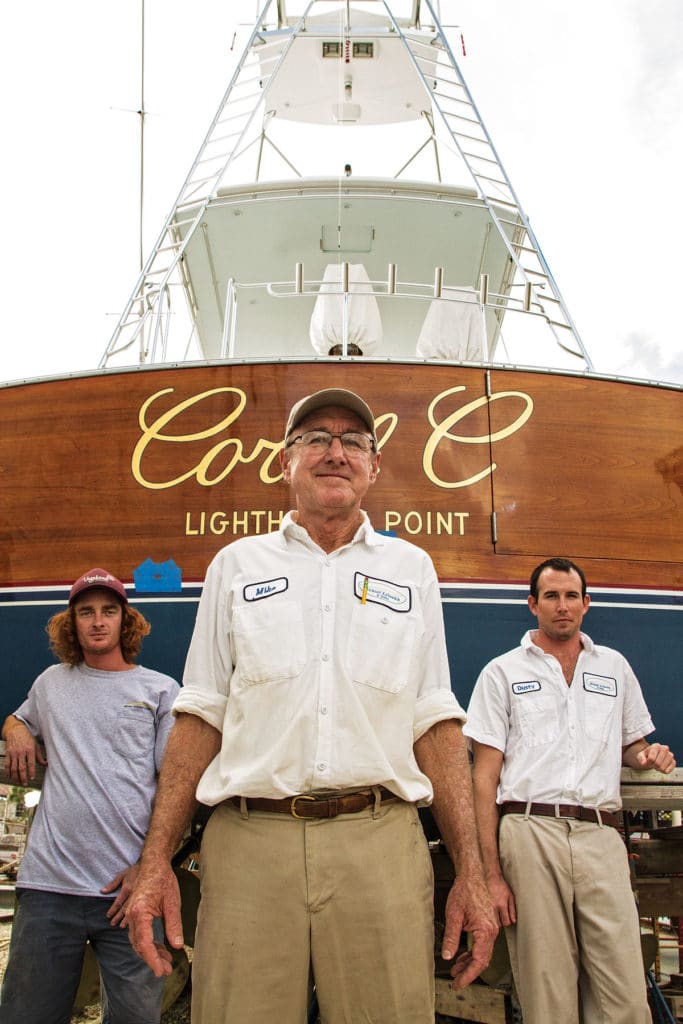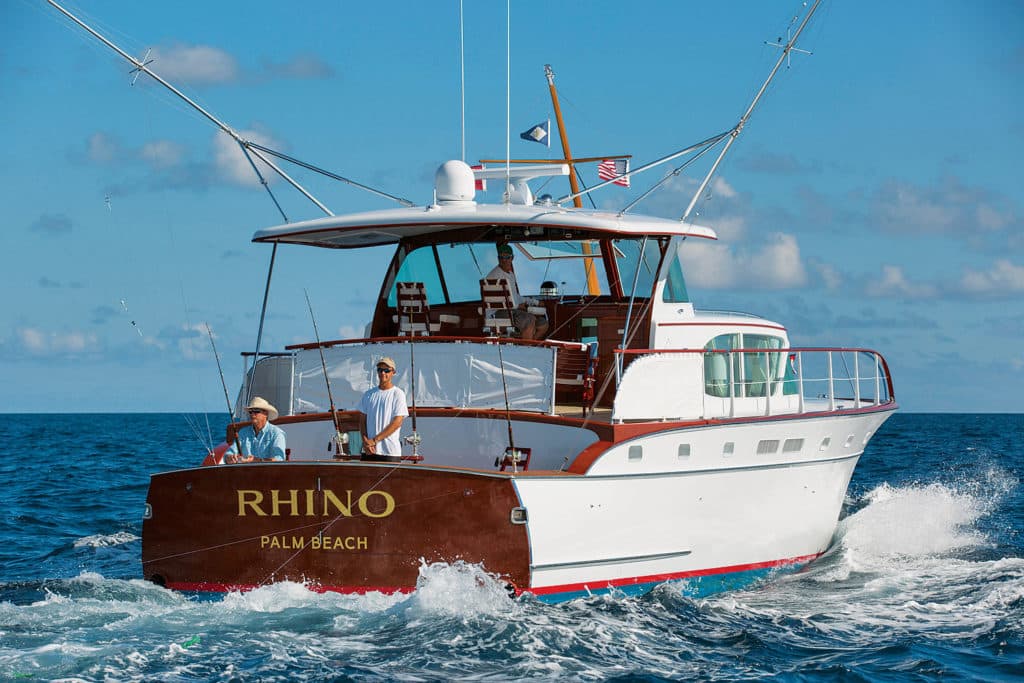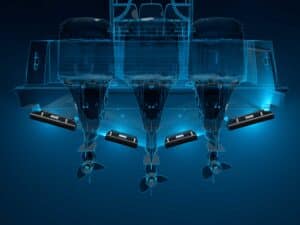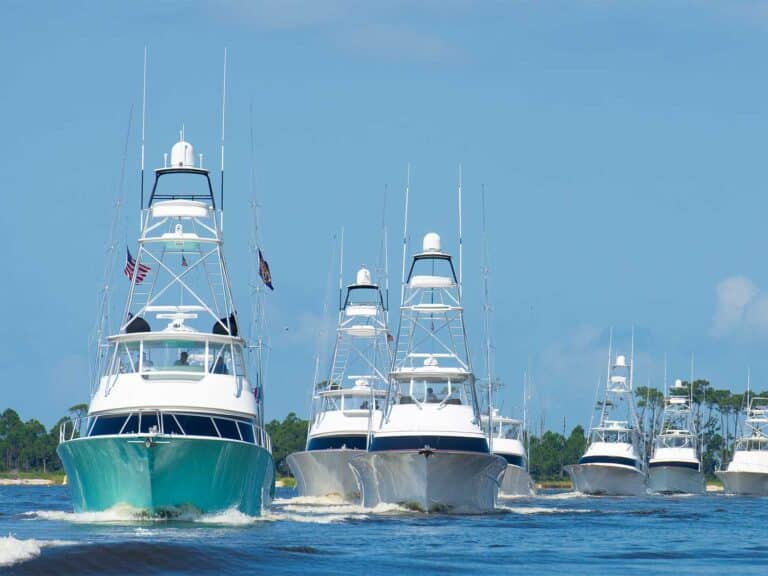John Rybovich Sr., Michael’s grandfather, was a fisherman with carpentering skills who fell into the boat-repair business out of necessity, keeping his and fellow fishermen’s boats on the water. With the help of his three sons, Johnny, Tommy and Emil, the business evolved. They started converting existing cruisers into fishing boats by adding crude outriggers and fighting chairs. In 1947, the three-brother team collaborated to build its first boat specifically designed for tuna fishing. Soon after, they launched Miss Chevy II and forever changed boatbuilding by developing evolutionary processes used for years to come. The Rybovich boys raised the bar again in 1952 with Miss Chevy IV, introducing the broken sheer line as a design element, and they created the first aluminum tuna tower. For the next two decades, the brothers continued to enhance their sport-fisherman designs.
We are here to build a better boat. It’s as simple as that.
Michael Rybovich, the son of Emil, follows the mantra that made the Rybovich name great. Michael says, “We continue to subscribe to the same philosophy: listen, think and create. We are here to build a better boat. It’s as simple as that.”

Four Generations Strong
M: Your uncles and father built a name for Rybovich by often doing the unordinary. What is the Rybovich difference today?
A Rybovich builds it. We have a great sense of pride in the quality and performance of our boats. We build great boats, and just like everyone else in this business who believes they make the best boat on the market, we say the same. Everything from looks to performance, our boats have it.
M: How did your current operation get back to what it’s been missing for so long?
After breaking off from Rybovich and Sons in 2008, we opened Michael Rybovich & Sons in 2011. I hope it is the last move we make as the gypsy kings because we’ve been on the move ever since we sold the family boatyard back in 1975. We just completed hull no. 2. We are about halfway through hull no. 3 and plan on getting hull no. 4 started shortly as well. When we’re not building a new one, we’re always busy around the yard doing refits and service.
M: The Rybovich double-cabin design is still of great interest to your potential owners. Why?
We continue to see the trend of boats getting bigger and bigger. Ever since Hatteras released the true convertible design, we haven’t seen much of the double-cabin design. The aft of the boat on a convertible is truthfully a waste of space but necessary to keep the proportions right due to all of the needed accommodations forward. It looks like a boat with the ass-end bitten off, whereas a cabin cruiser can still fish and provides a lot of room for accommodations — and a smoother ride for the owner. We are building a long-range cruiser that can compete with the speed of convertibles, with a 40-plus-knot top end

M: How did it feel to work on Rhino again?
We just completed the major refit on Rhino that took just under two years to complete. She’s an absolute classic and was a fun project for us here at the yard. We took her all the way down and back, and delivered her in March 2015. She was originally built in 1959 and featured the classic double-cabin design. We took out her old pair of 892s and added a pair of 715 hp Cummins QSM11s. We gave her the speed she always wanted. When she launched, she was a big and fast boat at 18 knots, but now she can easily run 31 knots with her new power. When we took her down to her planks, we found she was still rock-solid and her double-planked and oak frame was all structurally good — cosmetically she was a mess, but we made her gorgeous again.







